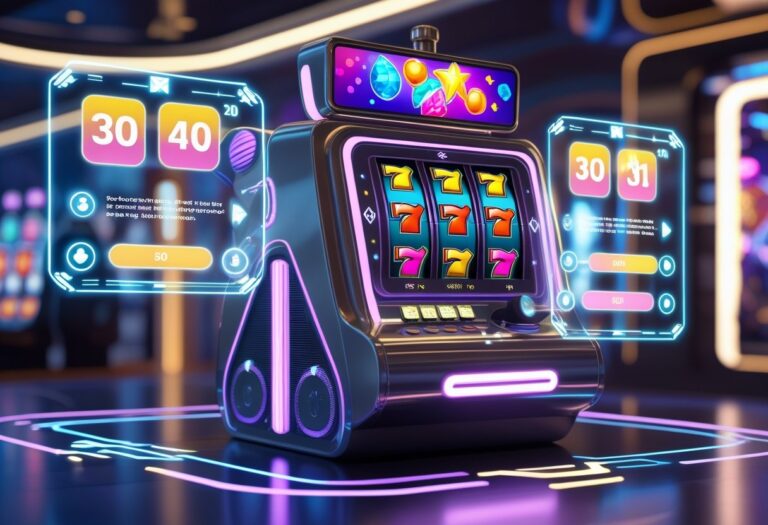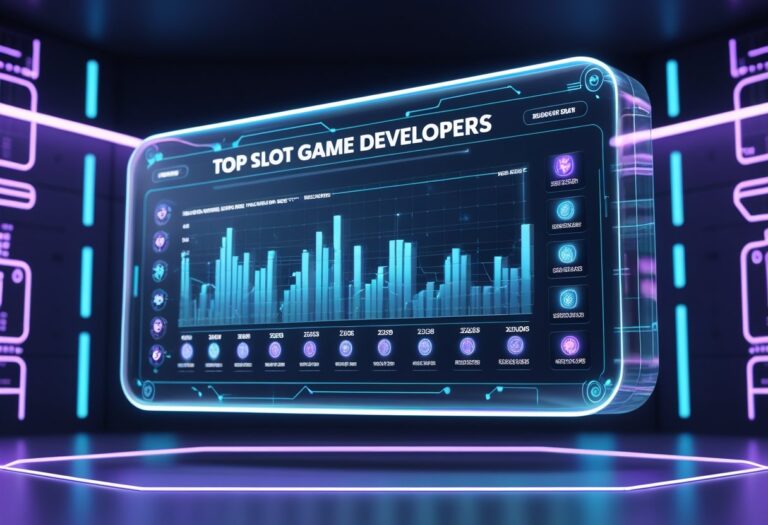
Mastering Casino Performance: Elite Stress Management Strategies
Understanding Casino Environment Psychology
High-stakes casino environments create unique psychological challenges that can significantly impact player performance. Research demonstrates that casino floor stress can elevate cortisol levels by up to 30%, affecting decision-making capabilities and strategic thinking. Understanding these physiological responses is crucial for maintaining optimal performance.
Advanced Stress Management Techniques
Breathing Optimization
The 4-7-8 breathing technique serves as a cornerstone for maintaining composure during intense gaming sessions. This scientifically-backed method regulates heart rate and oxygen flow, enabling clearer thought processes and improved focus.
Strategic Positioning
Optimal table positioning and environmental awareness significantly reduce cognitive load. Maintaining clear sightlines and establishing comfortable personal space creates a psychological advantage in crowded gaming environments.
Cognitive Performance Protocols
Implementing structured break intervals every 45 minutes prevents mental fatigue and maintains decision-making clarity. Bankroll management discipline of 2-3% per wager creates a sustainable foundation for extended play sessions.
FAQ: Casino Performance Enhancement
Q: How can I maintain focus during extended gaming sessions?
A: Implement regular breaks, maintain proper hydration, and utilize structured breathing techniques to sustain mental acuity.
Q: What is the optimal break duration between sessions?
A: Take 15-minute breaks every 45 minutes of play to reset cognitive function and prevent decision fatigue.
Q: How does proper positioning affect performance?
A: Strategic positioning reduces environmental stress and improves information processing capabilities.
Q: What role does bankroll management play in stress reduction?
A: Strict adherence to 2-3% wagering limits provides psychological security and prevents emotional decision-making.
Q: How can I recognize signs of casino stress?
A: Monitor physical indicators such as increased heart rate, tension, and decision hesitation as early warning signs.
The Psychology Behind Casino Stress

Understanding Casino Psychology: Managing Stress and Anxiety
The Three Pillars of Casino-Related Psychological Stress
Sensory Overstimulation
Casino environments deliberately create an overwhelming sensory experience through flashing lights, constant sounds, and crowded spaces.
This intense stimulation activates the sympathetic 먹튀검증 유튜브카지노 nervous system, triggering a fight-or-flight response that impacts cognitive function.
The brain’s inability to effectively process this sensory bombardment leads to increased anxiety levels and decreased decision-making capabilities.
Cognitive Decision Fatigue
Continuous gambling decisions create substantial mental strain through repeated choice-making.
The psychological burden of weighing odds, evaluating risks, and managing betting strategies depletes mental energy reserves.
This cognitive exhaustion progressively deteriorates judgment quality, leading to compromised decision-making and elevated stress levels in casino settings.
Impact of Loss Aversion
Loss aversion psychology plays a crucial role in casino-related stress.
Research shows that the negative emotional impact of losing money is approximately twice as powerful as the positive feeling from winning an equivalent amount.
This psychological phenomenon often triggers a destructive cycle where players attempt to recover losses through increasingly risky behavior, amplifying stress levels and poor decision-making.
FAQ: Casino Psychology and Stress Management
Q: How does casino noise affect stress levels?
A: Casino noise consistently activates the stress response system, increasing heart rate and anxiety levels while reducing concentration capabilities.
Q: What’re effective methods to combat decision fatigue in casinos?
A: Taking regular breaks, setting strict time limits, and maintaining predetermined betting limits help prevent mental exhaustion.
Q: How does loss aversion influence gambling behavior?
A: Loss aversion creates an intensified emotional response to losses, often leading to irrational attempts to recover lost funds.
Q: Can casino lighting affect decision-making abilities?
A: The bright, fluctuating lights in casinos can disrupt natural circadian rhythms and impair cognitive function.
Q: What role does crowd psychology play in casino stress?
A: Dense crowds contribute to sensory overload and can increase anxiety through social pressure and competitive atmospheres.
Mastering Your Emotional Temperature
Mastering Your Emotional Temperature in High-Pressure Situations
Understanding Emotional Control Mechanisms
Emotional regulation and stress management are critical skills for maintaining peak performance under pressure.
Casino environments specifically design their atmosphere to trigger emotional responses, making self-awareness and strategic control essential for success.
Recognizing and Responding to Emotional Triggers
Physical stress indicators include:
- Elevated heart rate
- Muscle tension
- Shallow breathing
- Racing thoughts
The 4-7-8 Breathing Technique
This scientifically-proven breathing pattern helps activate the parasympathetic nervous system:
- Inhale deeply for 4 counts
- Hold breath for 7 counts
- Exhale slowly for 8 counts
Implementing Strategic Control Systems
Cognitive Checkpoints
Establish 20-minute intervals for systematic self-assessment:
- Body tension scan
- Betting pattern evaluation
- Emotional state check
- Decision-making quality review
Physical Anchoring Technique
Create a tactile reminder system:
- Press thumb and forefinger together
- Associate with predetermined limits
- Use as pattern interrupt
- Return to rational thinking
Frequently Asked Questions
Q: How often should I take breaks during intense sessions?
A: Implement mandatory 5-minute breaks every hour or when stress indicators emerge.
Q: What’re the first signs of emotional tilt?
A: Watch for increased betting frequency, muscle tension, irritability, and decreased decision-making clarity.
Q: Can breathing exercises really impact decision-making?
A: Yes, controlled breathing directly affects neural pathways and cognitive function.
Q: How do I maintain emotional control during losses?
A: Use predetermined stop-loss limits, breathing techniques, and physical anchoring methods.
Q: What’s the most effective way to develop emotional awareness?
A: Practice regular self-assessment through cognitive checkpoints and physical state monitoring.
Building Mental Stamina

Building Mental Stamina: A Comprehensive Guide
Foundations of Mental Endurance
Mental stamina serves as the cornerstone for sustained success in high-performance environments.
Cognitive endurance extends beyond basic focus, encompassing the ability to maintain peak mental performance under intense pressure.
Building these mental capabilities requires a systematic approach, similar to physical training protocols.
Strategic Training Methods
The development of mental resilience begins with structured 30-minute focus blocks, progressively expanding to 2-hour intensive sessions.
During these intervals, practitioners should engage in strategic decision-making exercises while managing controlled distractions.
Performance tracking becomes essential to identify cognitive decline patterns.
Three-Pillar Enhancement System
- Baseline Assessment: Establish fundamental endurance through timed practice sessions
- Recovery Implementation: Integrate strategic 5-minute breaks every 45 minutes
- Progressive Challenges: Expose yourself to increasingly complex scenarios
Performance Optimization
Mental fatigue indicators become apparent through declining decision quality.
Successful practitioners maintain consistent cognitive performance across extended periods.
Understanding personal mental limits proves crucial for sustainable performance.
#
Frequently Asked Questions
Q: How long does it take to build mental stamina?
A: Development typically requires 4-6 weeks of consistent practice with progressive intensity.
Q: What’re the key signs of mental fatigue?
A: Decreased decision quality, slower response times, reduced attention span, and impaired judgment.
Q: How often should mental stamina training occur?
A: Daily practice sessions are recommended, starting with 30 minutes and gradually increasing duration.
Q: Can mental stamina be maintained long-term?
A: Yes, through consistent practice and proper recovery protocols.
Q: What role does rest play in mental stamina development?
A: Strategic rest periods are essential for consolidating improvements and preventing cognitive burnout.
Strategic Bankroll Decision Making
Strategic Bankroll Management: Advanced Tactics for Success
Core Principles of Bankroll Management
Effective bankroll management requires a systematic approach built on calculated decision-making and risk mitigation.
Implementing strict betting limits of 2-3% per individual wager ensures optimal bankroll preservation while maintaining sustainable growth potential through market fluctuations.
Key Performance Metrics
Setting Strategic Parameters
- Session Duration Goals: Establish clear timeframes
- Loss Limits: Define maximum acceptable drawdown
- Profit Targets: Set realistic achievement benchmarks
- Risk-Reward Ratios: Balance potential gains against losses
Advanced Risk Management
Successful bankroll optimization demands rigorous adherence to predetermined thresholds.
A $1,000 starting bankroll typically warrants a $300 loss limit and $500 profit target within a structured three-hour session framework.
Strategic Implementation
Professional bankroll management requires:
- Immediate execution upon reaching limits
- Emotional neutrality in decision-making
- Systematic exit strategies
- Data-driven adjustments
## Frequently Asked Questions
What’s the optimal bankroll percentage for single bets?
Conservative bankroll allocation suggests limiting individual bets to 2-3% of total capital.
How should profit targets be determined?
Set profit objectives based on historical performance data and personal risk tolerance levels.
When is the best time to implement stop-losses?
Establish stop-loss points before beginning each session and execute immediately upon reaching them.
What role does session duration play in bankroll management?
Time management helps maintain discipline and prevents fatigue-based decision-making.
How often should bankroll strategies be reviewed?
Conduct regular performance assessments and adjust strategies monthly based on results and market conditions.
Exercises for Peak Performance

Exercises for Peak Performance: Mental and Physical Training Guide
Essential Mental Preparation Techniques
Deep breathing exercises form the foundation of peak mental performance:
- 4-4-4 breathing pattern: Inhale for 4 counts, hold for 4, exhale for 4
- Practice for 5 minutes before engaging in high-focus activities
- Stabilizes heart rate and enhances oxygen flow to the brain
Mental mathematics training:
- Practice rapid calculations and probability assessments
- Develop quick decision-making abilities
- Strengthen analytical thinking skills
Physical Conditioning Strategies
Movement and posture optimization:
- Shoulder mobility exercises every 30 minutes
- Neck flexibility routines to prevent strain
- Ergonomic positioning for extended sessions
Balance and coordination training:
- Single-leg standing combined with cognitive tasks
- Dynamic balance exercises for improved focus
- Proprioception training for enhanced awareness
Advanced Performance Enhancement
Memory and visualization:
- Sequential pattern recognition exercises
- Mental imagery practice before rest periods
- Working memory drills for improved retention
Fine motor skill development:
- Dexterity training through precision exercises
- Hand-eye coordination enhancement
- Micro-movement control practice
Frequently Asked Questions
Q: How often should I practice these exercises?
A: Perform mental exercises daily and physical routines every 2-3 hours during extended sessions.
Q: What’re the best times to implement breathing exercises?
A: Before sessions, during breaks, and whenever focus needs refreshing.
Q: Can these exercises improve decision-making abilities?
A: Yes, regular practice enhances cognitive function and decision-making speed.
Q: How long does it take to see results?
A: Most practitioners notice improvements within 2-3 weeks of consistent practice.
Q: Are these exercises suitable for beginners?
A: Yes, all exercises can be modified to accommodate different skill levels.



